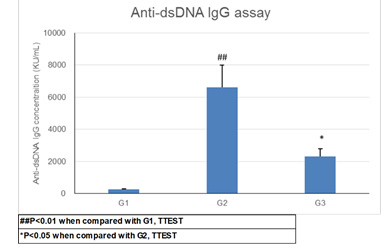


Systemic lupus erythematosus (SLE) is a common autoimmune disease involving multiple systems and organs. Many kinds of autoantibodies are produced due to cellular and humoral immune dysfunction. The pathogenesis is mainly due to the formation of immune complexes. The exact cause is unknown. The disease entails repeated remission and relapse. SLE is common among young women, and is more prevalent in China than in western countries, which may be related to genetic factors.
We have observed by electron microscopy that there are "viral inclusions" in the endothelial cells of lupus nephritis. Similar inclusions can also be found in the skin, vascular endothelial cells and lymphocytes. In some SLE patients, antibody titers of measles virus, rubella virus, mumps virus and EB virus are increased. SLE type NZB / NZWF mice can be isolated from the C virus, but it is not confirmed in humans. Pharmalegacy has established an SLE model utilizing MRL/lpr and NZB/W F1 mice.
· Animals: Female NZB/W F1 mice,11-12 weeks old
· Model: Induced
· Reagents: Pristane


Animals: Female MRL/MpJ-Faslpr mice and MRL/MpJ mice, 7 weeks old
Model: Spontaneous
End Points: Blood Urea Nitrogen (BUN) biochemistry kit; Anti-dsDNA IgG ELISA kit

